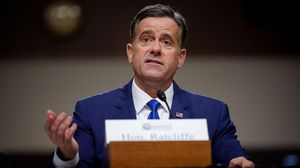The Mexican peso has seen significant gains against the U.S. dollar as it rises amid global dollar weakness, influenced by uncertainties surrounding potential trade tariffs from President Donald Trump. Early trading on January 22, 2025, showed the peso exchanging at 20.5892 to the dollar, reflecting a modest appreciation of 0.27% from the previous day's closing rate of 20.6457.
Market analysts from Monex reported, "Today, the Mexican peso benefits from the dollar's retreat, which has lost ground against several emergent currencies, driven by the absence of specific tariff decrees from Trump—creating expectations for a more moderate trade approach." This view aligns with the prevailing sentiments among investors who are cautiously optimistic about the near-term economic strategies of the new U.S. administration.
Trump's recent comments about potentially imposing 10% tariffs on goods from China, along with the looming 25% tariffs on Mexico and Canada, coupled with taxes on imports from the European Union, have generated considerable volatility. Despite the threats, the lack of detailed implementation timelines has lent the peso some relief, allowing it to stabilize temporarily.
According to Bloomberg Línea, on the morning of January 22, the dollar traded around 20.57 Mexican pesos on average, indicating 0.3% downward movement relative to the previous day’s closing of 20.63 pesos. The dollar has seen compositional losses of approximately 1.36% over the past week, even as it remains elevated by 20.59% compared to the previous year’s averages. Some analysts caution, though, about the sustainability of this strengthening, noting, "This stability could be very short term if Trump's trade threats materialize."
The peso's relative strength can also be attributed to its classification among leading currencies, positioning it as the top-performing currency among the 16 tracked by Bloomberg during the week. The broader U.S.-Mexico economic ties mean the two economies are deeply intertwined, with any policy decisions reverberated across currencies and markets.
Historical analysis shows how Trump's prior presidency similarly rattled the peso with sharp announcements affecting trade norms. Speculation about potential tariffs, should they gain traction, often sends ripples through the currency exchange rates. "Markets are betting on the idea some of the measures announced could be moderated or renegotiated. Nevertheless, reactions to Trump's stance can escalate quickly," said CIBanco analysts.
The recent economic backdrop seeing the Mexican peso gain prominence as the 15th most traded currency globally is coupled with Mexico's role as the top commercial partner to the United States, making any shifts significant. The first days of the new administration are marked by uncertainty, with plans to implement tariffs on Mexican goods starting February 1, which has raised numerous concerns among investors.
The Mexican economy has seen periods of both stability and turbulence, marked by these trade relationships. Looking forward, predictions from financial institutions like Banxico estimate potential dollar trading ranges to fall between 20.24 and 20.69 pesos, underscoring the expected continued fluctuations resulting from Trump's administration policies.
It remains to be seen how the strengthening of the peso against the dollar will hold as the potential changes emerge from the U.S. trade agenda. Market watchers will keep their eyes closely tuned to any forthcoming tariff announcements and how they might impact this fragile currency stability.
With political and economic landscapes continuously shifting, the relationship between the Mexican peso and the U.S. dollar will be one to watch closely in the coming months as Trump's policies develop and the global economy adjusts.



